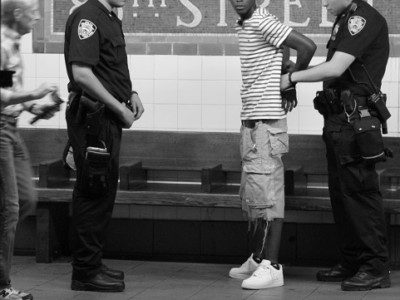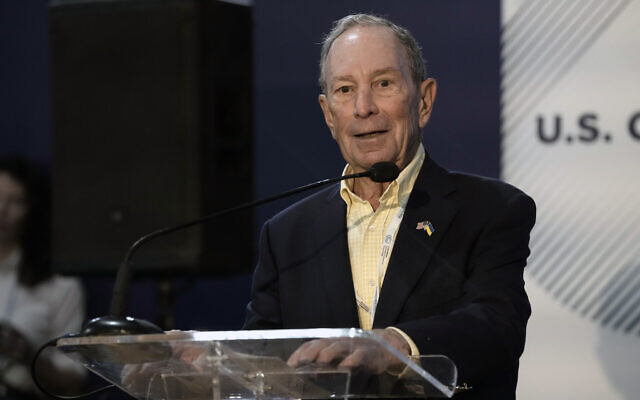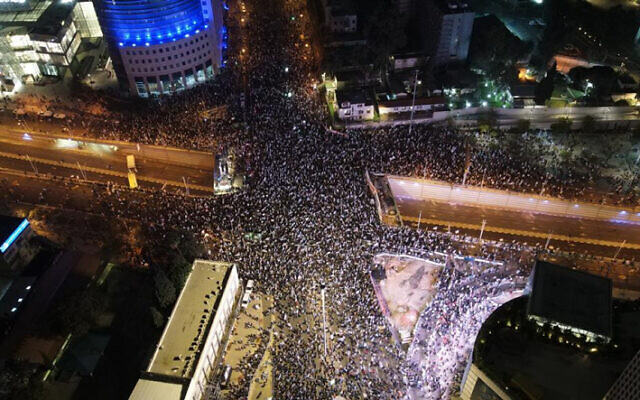George Floyd’s murder is part of a through line of police violence first enabled by the "Dred Scott" ruling.
By Taru Taylor ,

The 2020 protests against police brutality after the death of George Floyd were the biggest in United States history. Not since the 1960s assassinations of the Kennedy brothers, Malcolm X and Martin Luther King, Jr. has our nation, and indeed the world, witnessed a more significant martyrdom. Many scoff at the notion of Floyd as martyr. Floyd was no statesman nor great moral leader. But his everyman quality resonates. His extrajudicial murder is part of a through line of police-perpetrated violence first enabled by the Dred Scott v. Sandford decision that has metastasized since 1857.
Floyd is a martyr to the truth that Dred Scott persists as the law of the land. Justice Roger Taney’s pro-slavery majority opinion held that Black people could never be citizens and that, “The negro had no rights which the white man was bound to respect.”
While Black people today are not enslaved like in 1857, Justice Peter Daniel’s concurring opinion continues to frame them, at best, as mere “freedmen” and “freedwomen.” Yet Black Americans have been freeborn citizens since July 9 a century and a half ago.
“Freedman” and “freedwoman” are thus slurs to every citizen born on U.S. soil after July 9, 1868. On that day the states ratified the 14th Amendment, declaring natural-born citizenship. The formerly enslaved persons that the 13th Amendment freed were “freedmen” and “freedwomen.” When Congress established the Bureau of Refugees, Freedmen, and Abandoned Lands (known as the Freedmen’s Bureau) in 1865 to incorporate Black people and white refugees into mainstream society, they named it appropriately. But all Americans born after that epochal July 9 have been freemen and freewomen.
This distinction between “freeman” and “freedman” is critical. As is Justice Daniel’s concurring opinion. Justice Daniel argued that U.S. society mirrors the three classes of ancient Rome. The ingenui (freemen) were freeborn citizens making up the ruling class. The libertini (freedmen) were quasi-citizens who behaved by obsequium, the official custom that made them compliant and dependent on their patrons or former masters. The servii were slaves. Here in the U.S., Black people were considered natural-born slaves although a few were “freedmen.” Only white men could be “freemen.”
RELATED STORY

PRISONS & POLICING
From “Probable Cause” to “Reasonable Suspicion”: The Subversion of the Fourth Amendment
The subversion arises from a 1968 Supreme Court decision.
By Taru Taylor , TRUTHOUTApril 17, 2018
Daniel’s concurring opinion frames today’s 40 million U.S. citizens who are Black as freedmen and freedwomen with no rights that white persons are bound to respect. The original intention of the 14th Amendment was to overrule Dred Scott, to recognize Black people as citizens with the same constitutional rights as whites.
But the Supreme Court, in the four decades after the Civil War, nullified the 14th Amendment when it came to Black people through several cases, such as the 1873 Slaughterhouse cases, which neutered the privileges or immunities clause; the 1883 Civil Rights cases ruling that the Civil Rights Act of 1875 was unconstitutional; and the 1896 Plessy v. Ferguson decision establishing the “separate but equal” doctrine, which sanctioned U.S. apartheid. More recently, the court voided the Ku Klux Klan Act of 1871 and gave police officers “qualified immunity” in the 1967 Pierson v. Ray case. In short, the Supreme Court revived Dred Scott. The key issue is whether Black people who are born on U.S. soil should be recognized as freemen and freewomen with the full rights of citizens.
Lawless Law Enforcement
More than 18,000 police departments across the U.S. abuse citizens who are Black as if they are mere freedmen and freedwomen. For example, cops and their apologists explain away police brutality under the mantra: “He should have complied!” They evoke the ancient Roman custom of obsequium.
But our democratic republic only recognizes one class of citizen: the freeman or freewoman. The theory of popular sovereignty underpins the ideal of democracy in the U.S. and around the world. The citizen reigns. Public servants rule in his or her name. This is the fundamental “separation of powers.” The citizen votes and serves on juries and otherwise “checks and balances” the other three branches of government.
According to the Declaration of Independence, the just powers of government are derived from the consent of the governed. Black people do not consent to becoming George Floyd or Breonna Taylor, nor to any of the other martyrs who have suffered the extrajudicial death penalty.
Notwithstanding Indigenous tribal sovereignty, the preamble to the Constitution underscores popular sovereignty: “We the people do ordain and establish this Constitution for the United States of America.” Note the present tense, which means that every generation must define constitutional meaning. The preamble also mandates that we “secure the blessings of Liberty to ourselves and our posterity.” But to get beyond liberty as buzzword, let’s consider legal scholar William Blackstone’s definition of the term in his 1765 Commentaries on the Law of England, a master text for the constitutional framers.
Personal liberty “consists in the power of locomotion, of changing situation, or removing one’s person to whatsoever place one’s own inclination may direct; without imprisonment or restraint, unless by due course of law.” In short, liberty is unrestrained locomotion.
The freeman or freewoman enjoys unrestrained locomotion. Meanwhile, the tyrannical U.S. majority criminalizes 40 million Americans for driving while Black, walking while Black or pretty much doing anything while Black. Yet half a century ago, one Supreme Court justice did see lawless law enforcement for what it was.
Justice William Douglas championed Black liberty. He was the lone dissenter in two landmark cases that sanctioned the modern police state through the judicial doctrines “qualified immunity” and “reasonable suspicion” — respectively the 1967 Pierson v. Ray and the 1968 Terry v. Ohio decisions.
Justice Douglas’s Dissent in Pierson v. Ray
Pierson made “qualified immunity” the law of the land. The case involved white and Black clergymen who attempted to desegregate a bus terminal in Jackson, Mississippi. A municipal court convicted them of violating a state statute that made it a crime to congregate in a public place if they breached the peace and then refused to disperse when so ordered by a police officer. They were acquitted on appeal.
The clergymen then sued the municipal court judge, and the police officers who arrested them, under Section 1 of the Ku Klux Klan Act of 1871. Pierson held that the act had in no way impaired the common law’s absolute immunity for judges in their judicial acts. It held that the police officers had a “qualified immunity” which would protect them from liability if the court found, on retrial, that the officers acted in the good-faith belief that the statute they were enforcing was constitutional.
The Pierson ruling effectively put judges and police officers above the law. It nullified a Civil Rights Act that was meant to protect Black Americans from neo-Confederate terror. Congress passed the Civil Rights Acts largely to void the Black Codes that the former Confederate states were using to deny Black people’s right to vote, make contracts, own property and move about freely etc. The Ku Klux Klan Act mandated that public officials recognize the rights of Black citizens.
The Ku Klux Klan Act states that “every person,” who under color of state law or custom, “subjects, or causes to be subjected, any citizen … to the deprivation of any rights, privileges, or immunities secured by the Constitution and laws, shall be liable to the party injured in an action at law, suit in equity, or other proper proceeding for redress.” Justice Douglas insists that when the act says “every person,” it means every person — not every person except judges or police officers.
Justice Douglas notes the “lawlessness” that pervaded the South after the Civil War and thus necessitated the Civil Rights Acts. Lawlessness was not limited to the South nor to the namesake of the act in question, the Ku Klux Klan. Justice Douglas describes some judges as “instruments of oppression.” He describes some state courts as “instruments of suppression of civil rights.” Writing in 1967, he makes plain the continuing relevance of the Civil Rights Acts enacted during the Reconstruction era: “The methods may have changed; the means may have become more subtle; but the wrong to be remedied still exists.”
As for the argument that judges and police officers need immunity from liability to be independent and to do their jobs effectively, Justice Douglas replied: “The argument that the actions of public officials must not be subjected to public scrutiny because to do so would have an inhibiting effect on their work, is but a more sophisticated way of saying, ‘The King can do no wrong.'”
But he was in lone dissent. Fifty-six years later, apologists for lawless law enforcement continue to argue, “The King can do no wrong.” “Qualified immunity” persists. The “king” thus sits on a bench or flashes badge and gun.
We the people must insist that our public servants, our tax-paid government employees, even those who wear black robes or blue uniforms, recognize our rights as freemen and freewomen. We must overturn Pierson.
Justice Douglas’s Dissent in Terry v. Ohio
Terry v. Ohio removed the probable cause limitation of the police power. This further criminalized Blackness and thus made inevitable George Floyd’s extrajudicial murder 52 years after it was decided.
The Fourth Amendment secures the citizen against any unreasonable search or seizure of their person or property. Before Terry, the reasonableness of a police officer’s seizure or search was defined by the magistrate’s authority to issue a warrant on a showing of probable cause.
Terry redefined “reasonableness” in more subjective terms. Before 1968, police officers operated, at least in theory, with reference to the magistrate’s authority. Ever since Terry, cops have had the despotic discretion to search or seize any U.S. citizen based on a “reasonable suspicion” that they are a criminal or are about to commit a crime.
Terry allows police officers to operate by their own standard of reasonableness — “reasonable suspicion.” By coining the phrase, the Supreme Court put its imprimatur on circular reasoning. Much as the doctrine of “papal infallibility” deemed the pope incapable of error when teaching on certain matters of faith or morals, “reasonable suspicion” sanctioned a sort of police infallibility. Police officers, especially when making “split-second decisions,” now arbitrarily determine what is reasonable within the meaning of the Fourth Amendment.
“Reasonable suspicion” is an oxymoron worthy of 1984’s “newspeak.” For suspicion is inherently unreasonable. Merriam-Webster defines “suspicion” as “the act of suspecting something wrong without proof or on slight evidence: mistrust.” Compare the probable cause standard.
“Probable cause” means “having more evidence for than against” a crime being committed or having been committed, according to Black’s Law Dictionary. Whereas suspicion is based on “slight evidence,” probable cause denotes the preponderance of evidence that a cop needs to arrest a suspect. Actually, there is no standard definition of probable cause. But the concept evolved in the British colonies that later became the U.S. to protest the general warrants that allowed British authorities to search colonists wherever and whenever they wanted. Probable cause thus mandates specific warrants. Out-of-control policing is not new.
Justice Douglas discusses how the American Revolution was largely a reaction against Redcoats’ policing colonists as if they were all suspects. The Crown imposed writs of assistance on Massachusetts to crack down on smuggling. Writs of assistance were general warrants that permitted customs officials to enter any office or home without notice or probable cause. Lawyer and colonial legislator James Otis resigned his position as advocate general of the admiralty court in protest. He then challenged the legality of these writs per the maxim: “Every man’s house is his castle.” Otis inspired the Fourth Amendment’s later codification of the castle doctrine and the need for probable cause.
Justice Douglas invokes Otis to suggest an analogy between Redcoat oppression of the colonists and likely aggravated police oppression thanks to “reasonable suspicion.” What Otis argued against in 1761 Justice Douglas dissented against in 1968 — police arresting and searching on suspicion unchecked by probable cause. Justice Douglas saw the unraveling of the Fourth Amendment as a matter of history repeating itself. He wrote: “Police control took the place of judicial control, since no showing of ‘probable cause’ before a magistrate was required.”
Today, “reasonable suspicion” enables police to seize on suspicion. The Orwellian device subverts the Fourth Amendment’s original intent. Probable cause had been a limit on police discretion. Through Terry, magisterial authority gave way to police authoritarianism. It enabled police inquisition to encroach the judicial function. Thus, the Supreme Court abdicated judicial control in favor of police control.
“Reasonable suspicion” gave police officers, in effect, general warrants to seize or search (“stop and frisk”) Black people with impunity. Cops routinely ignore Black Americans’ right to the presumption of innocence, for Terry allows them to vent their prejudices and to treat 40 million citizens as criminals. “Reasonable suspicion” denotes white supremacist paranoia.
Otis foreshadows today’s complaints against lawless law enforcement. So does the Declaration of Independence. Consider its complaints about King George III permitting Redcoat police brutality: “For Quartering large bodies of armed troops among us: For protecting them, by a mock Trial, from punishment for any Murders which they should commit on the Inhabitants of these States.”
Justice Douglas wrote: “To give the police greater power than a magistrate is to take a long step down the totalitarian path.”
We must overturn Terry.
The judicial doctrines of “qualified immunity” and “reasonable suspicion” allow government employees with badge and gun to abuse their citizen-bosses who pay their salaries. Under current legal jurisprudence, Black people have no rights which men and women in blue uniforms are bound to respect. Dred Scott persists. Nevertheless, Justice Douglas’s Pierson and Terry dissents provide the blueprint for fighting racist police violence. Let’s take his heed.
Copyright © Truthout.
TARU TAYLOR is a recent law school graduate who studied I Ching while teaching English in Korea and is president of Black Belt Chess Academy. He recently helped get the name “John Marshall” removed from Cleveland’s public law school on account of the former chief justice’s unrepentant slaveholding and lawless jurisprudence that conduced to Dred Scott.
:quality(70)/cloudfront-us-east-1.images.arcpublishing.com/archetype/4ANZZOO62BCYVDHTH64TNRLJFI.jpg)













